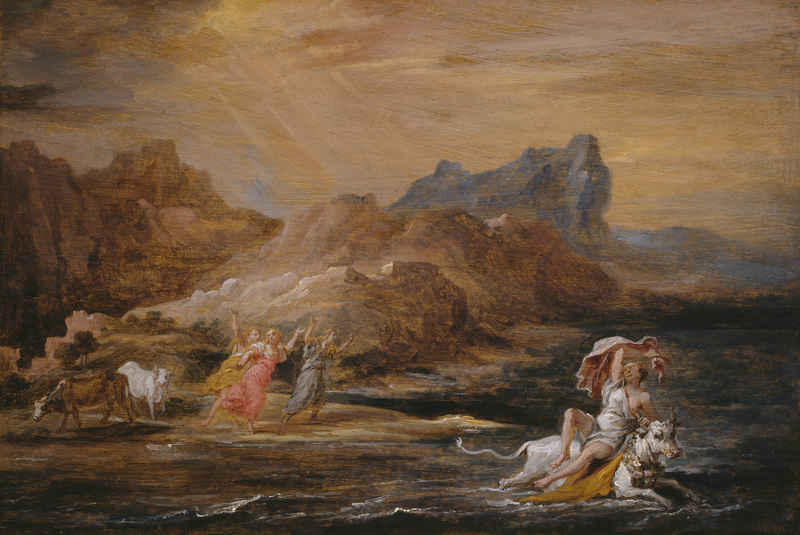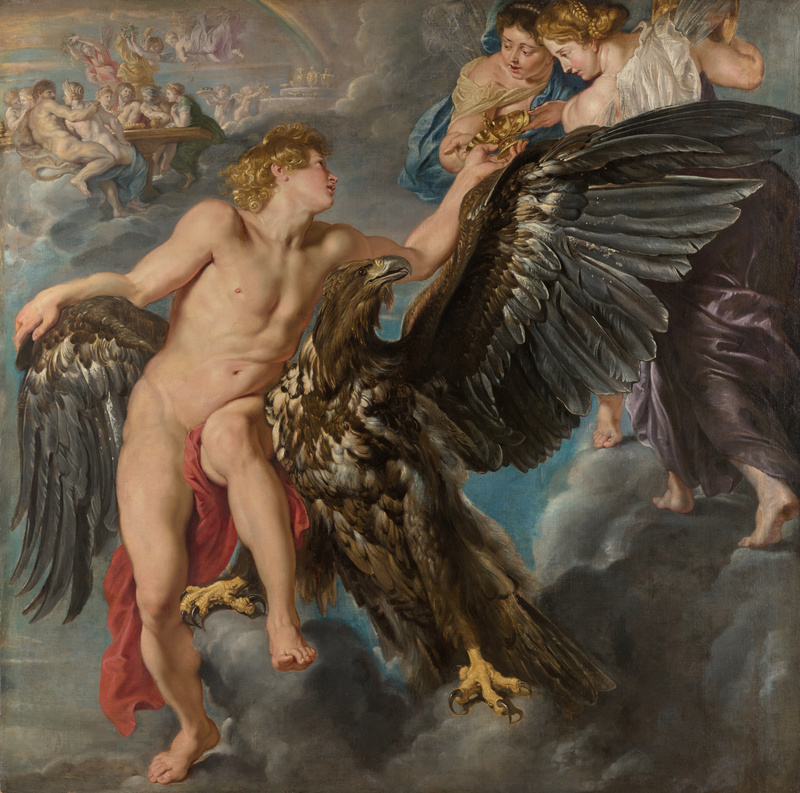Jupiter And His Conquests
Jupiter is most often shown with his conquests, both male and female. Renaissance painters often depict his manipulation to seduce the human he desires. Jupiter commonly transforms into animals, like a cow, eagle, or swan. These transformations allowed him to influence the outcome of the pairing more easily. Though humanists focused on the physical form, Jupiter is not frequently seen as “human”. He takes on animal or amorphous forms that distinguish him from the others. The affinity artists had for nudity and physical prowess is demonstrated through the lovers of the god. Separate from Venus, Jupiter is not the character used to explore the qualities of humanhood, his stories are. The one’s chosen are centered within the imbalance of power between the divine and mankind.
In the Renaissance, Jupiter’s depictions lack consistency. He is seen, throughout the renaissance and the Baroque period, in anthropomorphic and animal forms. Like Venus, his are erotic, female nudes prevalent, shown in Bachiacca’s Leda and the Swan and Tintoretto’s Jupiter and Semele. Bachiacca’s depiction appears much more naturalistic, the contours of Leda’s body more defined than Semele’s in Tintoretto’s. Both are later renaissance, demonstrating the transition to more dramatic storytelling of the Baroque style. Jupiter and Semele emphasizes the power imbalance between the lovers, Zeus descending on an intimidating storm cloud, lightning brewing inside. While Leda and the Swan focuses on the erotic nature of Jupiter’s conquests. He, in the form of a swan, sweeps Leda off her feet, nipping at her breast while a few children hatched from eggs gather around their feet. The painting all but alludes to their sexual union.
The Baroque paintings, Ganymede by Peter Paul Ruebens and The Rape of Europa by Daivd Teniers the Younger employ dramatic realism to invoke emotion in the viewer. The paintings enhance the themes of power and sex, utilizing techniques with light and shadow to draw attention to the subject. Reubens tells the story of how Jupiter, disguised as an eagle, sweeps the young man, Ganymede, away from the goddess he serves on Mount Olympus. Jupiter pulls Ganymede’s lower half away, while his arms reach out to the women. Erotic, Ganymede’s groin is only covered by the edge of a red cloth. Like Reubens, Teniers the Younger has Jupiter in animal form, a white cow, sweeping Europa away from her friends on the shore of an island. She reaches back towards them as he races across the sea to Crete, where he intends to assault her. Both demonstrate an interest Baroque artists developed towards theatrical storytelling, enhancing the emotions of the figures to provoke the viewer.



